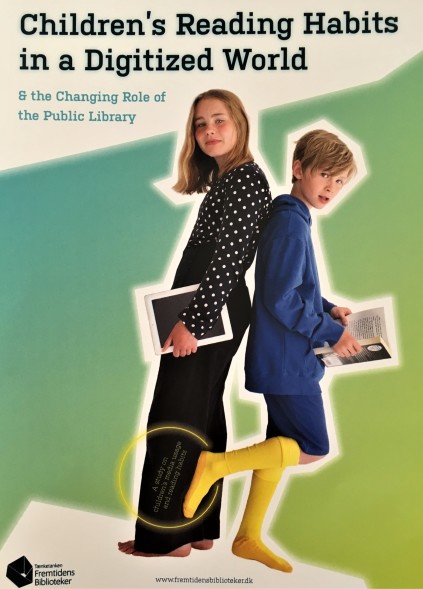Mixed Methods Study
The study is a mix of two data sets, quantitative and qualitative, ensuring exploration and analysis in the same study.
The quantitative analysis is based upon data from almost 9,000 children aged 9-14 studying children's media usage, reading and library habits.
The quantitative study is supplemented by an in-depth qualitative analysis focusing on children in 6th grade, where the reading behavior is changing radically.
Children's Reading Habits in a Digitized World
The daily life, culture- and media consumption of our children, has been radically transformed through the introduction of digital devices and services. Reading is no longer limited to physical books and other printed media, and is increasingly performed online via blogs, computer games, and social media. The role of the public library as a cornerstone in children's reading habits is also changing. But reading is as important as ever. So how do we create a strong culture of reading in this vast array of new settings for reading?
The Danish Think Tank 'Libraries of the Future' has - in collaboration with the two national knowledge centres: Lærermiddel.dk and National Centre for Reading - produced one of the largest studies of children's reading habits ever performed in Denmark: Children's Reading Habits 2017.

Main findings
Children are spending less time on reading in their spare time
The number of children reading several times per week is decreasing from 61% in 2010 to 56% in 2017.
The decline is greatest among girls (from 68% to 59%) and in 5th grade.
Children read in school and not at home
Children perceive reading as a school activity.
The experience of reading in school has an impact on how much children are reading outside of school.
Reading is difficult
57% of the children read only because their parents tell them to.
Children find it difficult to read longer texts.
What do children read?
70% of all children read text messages every day on a digital device.
79% of all children never read an e-book.
28% read printed novels, and Fantasy is the top genre.
Who inspires children to read?
Children are inspired to read by their friends, movies and their mother.
The public library gets the lowest rank as a source of inspiration.
Children are mostly spending time on screens
49% of the children in 7th grade use 1-3 hours/day on streaming services.
35% of the boys use minimum 4 hours/day on digital gaming.
19% of the girls use minimum 4 hours/day on social media.
Strategic Recommendations
The Think Tank presents 5strategic recommendations on how we can create a strong culture of reading:
- It's a shared task to ensure literate generations - both schools, libraries and parents must partake.
- Children from 7-14 still need adults actively helping them with a good reading culture - even if they are good readers.
- The school-library partnership is essential.
- Public libraries must rethink their outreach effort. All children go to school, but not all children go to the library.
- The lack of digital reading calls for action.
